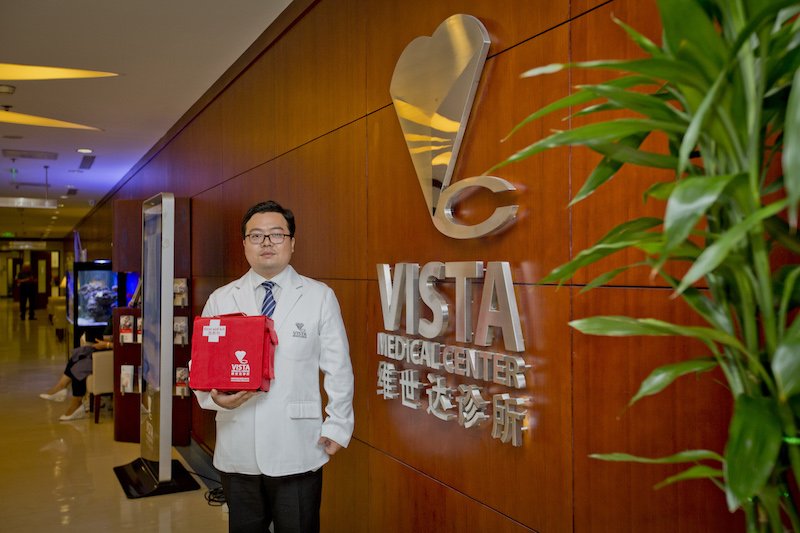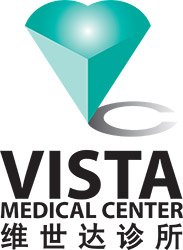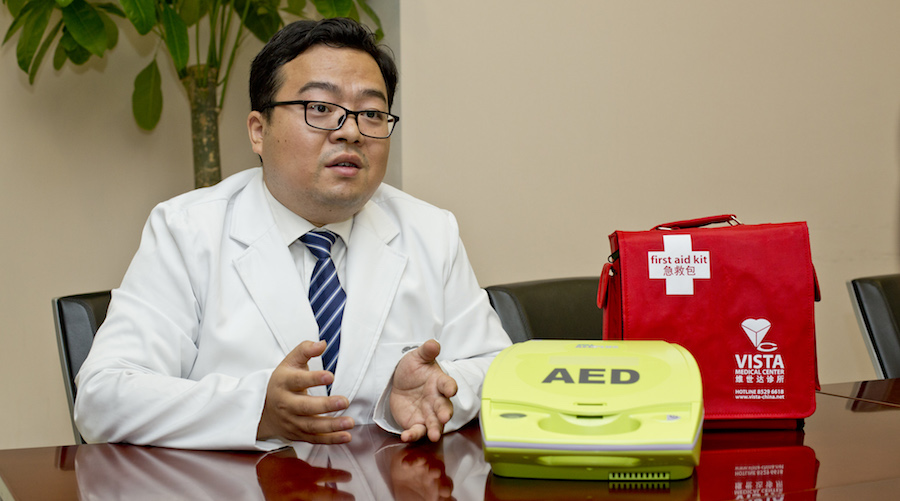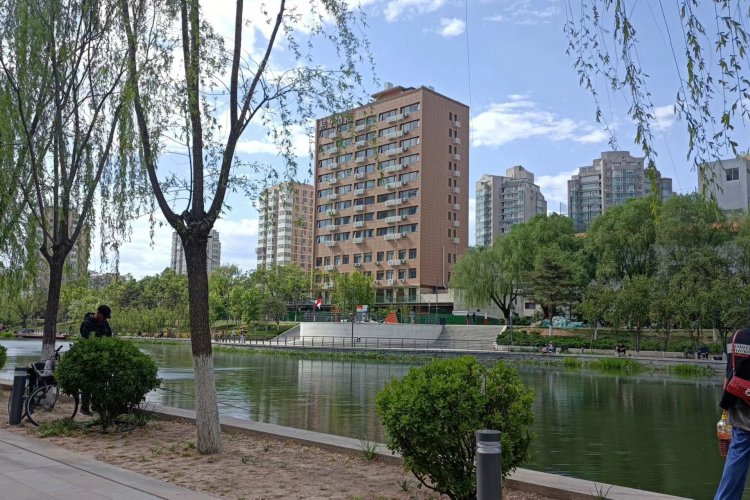Survive Now, Thrive Later: Vista Medical Center's Dr. Yin Discusses First Aid in Beijing
Admit it, at some point or other you’ve turned to the internet for medical advice. You might have stumbled upon a tip or two for managing a simple headache or relieving a sore throat but the fact remains that it is never a good idea to rely on online sources for medical help.
However, what if the situation was a bit more serious? Picture one of these scenarios: a child has had a fall and is unable to get up; a colleague suddenly faints at work; someone cuts themselves and can’t stop the bleeding; after a mile-long run, a friend begins wheezing, breathing rapidly and clutches his chest while falling to the ground – what would you do in these situations?

Even with the internet in the palm of your hand, it can be downright impossible to find the right information and to find it on time. Life is characterized by these twists and turns and if your first reaction is to just look around for help or try ‘Googling’ it, you may want to consider first-aid training.
On the occasion of World First Aid Day (Sep 9), Vista Medical Center’s Dr. Charles Yin talked to us about the importance of first-aid awareness.
Dr. Yin joined Vista Medical Center in 2013 and is responsible for daily clinical medical services, emergency medical services, emergency first-aid training, occupational health guidance, and medical services for immigration purposes. He graduated from Nanjing Medical University with a Masters Degree in Clinical Medicine in 2008. He has served as a resident doctor/general practitioner at several renowned medical institutions and as an on-site clinical doctor for several large international projects. He has been a qualified trainer of emergency first-aid programs such as BLS/Heart Saver for more than seven years. During this time he has worked with organizations such as China Emergency Rescue, the Indonesian National Rescue Team, BMW, Shell, Bayer, the Canadian Embassy, and the Swiss Embassy.

According to Dr. Yin, "first aid" refers to the provision of immediate assistance to an ill or injured person before the arrival of definitive medical care. According to American Heart Association (AHA) guidelines, the goal of the first aid provider should always be to preserve life, alleviate suffering, prevent further illness and promote recovery.
Dr. Yin gives an example to further emphasize why an awareness of basic first aid is so important: “In China, the survival rate for victims after cardiac arrests is only 1 percent, whereas in the USA it is around 10 percent. The reason behind this shocking statistic is the lack of AEDs. AEDs, or Automated External Defibrillators, are portable electronic devices that are usually installed in public places. They help diagnose life-threatening cardiac arrhythmias and help the heart re-establish an effective rhythm. Most first-aid courses cover the use of AEDs because they can save lives, but unfortunately, very few people are aware of it.”
Another factor to consider is that Beijing is a large city, with a lot of traffic. In the minutes after an incident occurs and before the medical team arrives, how the victim is treated can make a lot of difference. Bleeding may occur excessively and can be fatal, broken bones may cause further damage if they are moved, wounds that are not treated on time may become infected, not addressing an allergic reaction immediately with an EpiPen may cause severe complications. Hence, knowing and administering first aid in a timely and correct manner can be the difference between someone living or dying, between a temporary and a permanent disability.
A person who is trained to carry out first aid will be able to recognize, assess, and prioritize the need for first aid in a calm manner. They will possess the knowledge and skills to provide appropriate treatment and be able to recognize limitations and call for assistance without panicking.

“Training puts the power back into your hands – it provides the skills and confidence to deal with situations no matter where you are located or whom you are with,” Dr. Yin emphasizes.
Vista Medical Center offers training programs for both organizations and individuals. Dr. Yin recommends the AHA Standard Heartsaver® course which can be taken by anyone who wants to equip themselves with the skills to handle medical emergencies such as choking, heart attacks, strokes, seizures external bleeding, sprains, broken bones, and bites and stings. It also covers CPR training and the use of AED. The instructor-led one-day course is based on the excellent “practice-while-watching” model and is updated with the latest guidelines set by the American Heart Association. Courses can also be customized to meet individual requirements.
At the most basic level, a few simple tips can help you be better prepared for any emergency situation. “Apart from cardiac arrest and major bleeding, treatment is usually prioritized in the following order: airway (casualties with airway problems), breathing (difficulty breathing), circulation (shock or bleeding wounds), disability (breaks and burns),” Dr. Yin says. “Even before that stage, remain calm and ensure your personal safety first, especially in situations such as traffic accidents – beware of fire, objects that may explode, falling objects etc. Have all the necessary emergency phone numbers handy and keep a well-stocked first-aid kit in your home and workplace, and with you when you travel.”
For more information about first aid training courses, first-aid kits, and travel guides, please contact Vista Medical Center.


This post is paid for by Vista Medical Center.
Photos: Uni You, Wikimedia







